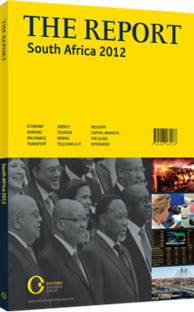OBG talks to Bheki Sibiya, CEO, Chamber of Mines

Interview: Bheki Sibiya
What advancements are being made in the industry with regard to beneficiation?
BHEKI SIBIYA: Those who say there is a lack of beneficiation do not always understand the full range of what it entails. If one mines coal at a low calorific value and improves the value by blending it to make it more attractive for exports, it can be argued that beneficiation is taking place. If coal is converted to generate electricity, that is another form of beneficiation, as the coal is no longer in its raw form and value is being extracted. This also holds true for gold: value is added when the mined material is turned into a gold bar or coins.
The same sort of thing applies with diamond cutting in South Africa. Some say that the gold and diamond industry should produce jewellery domestically. Yet the skill and market access required to do so is not available in South Africa. Jewellery assembly makes sense for highly populated countries, like India or China, or for highly specialised countries, like Italy. In South Africa, our speciality is mining; if you force the industry to rush into jewellery assembly, it will fail.
Is nationalisation feasible and achievable?
SIBIYA: Many unanswered questions remain regarding the nationalisation debate. Assuming it is to take the form of nationalisation with compensation, and assuming some shareholders will be willing to sell at fair market prices, where will the money come from? Our government has some spare funds, but there are other causes and areas where that money is needed. It could take the form of nationalisation without compensation, but there are 43 countries which have binding bilateral investment protection agreements with South Africa, and many of these will invoke compensation protection at the International Court of Justice in The Hague.
A final and fully clear resolution over the nationalisation debate is not expected until the beginning of 2013. The implication in the meantime is a delay of new investments. Some analysts are saying there could even be a flight of investments. I do not necessarily think this will be the case for the mining sector, as South Africa has an estimated $2.5trn of mineral wealth. Companies may protest, but they won’t leave. There are several reasons that nationalisation, while not impossible, is highly improbable. Yet as long as the debate goes on, the industry, while not folding, is unfortunately stalling.
How can the transformational potential of the mining industry be most effectively addressed?
SIBIYA: Parts of the mining charter should be addressed in order to smooth over areas that have been problematic. Otherwise, we have been given until 2014 to achieve the transformation objectives set out in the charter. When the deadline comes, mining companies can be adjudicated accordingly and licenses of those who have not met their obligations can be withdrawn.
In my opinion, no sector in South Africa has been as successful as mining when it comes to ownership transformation. The mining industry is the backbone of the economy, and financial services and other manufacturing industries feed both into and off of it. For a miner to get the BBBEE rating required, it is necessary for the suppliers of services and products to also be transformed. The mining industry thus acts as a catalyst for change across the entire economy.
Are the environmental responsibility and commitments placed on the mining industry appropriate?
SIBIYA: Environmental damage has certainly occurred as a result of the mining industry, but I don’t believe blame should be placed on the current operators, as they were not around when the legislation and obligations were inadequate. As responsible corporate citizens, companies in the mining industry are telling the government that they are willing to help. We can, for instance, solve the acid mine drainage around the mines by processing the water to make it potable. But this is costly. We are asking the government to allow us to feed the potable water back into the system at an appropriate commercial cost, but they have not allowed this yet.
You have reached the limit of premium articles you can view for free.
Choose from the options below to purchase print or digital editions of our Reports. You can also purchase a website subscription giving you unlimited access to all of our Reports online for 12 months.
If you have already purchased this Report or have a website subscription, please login to continue.

